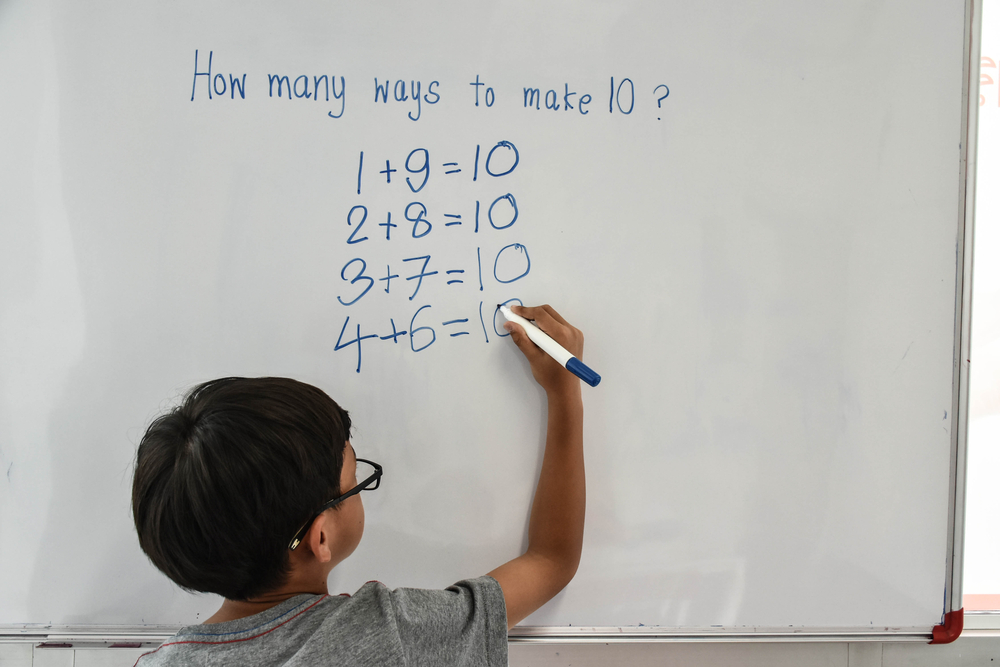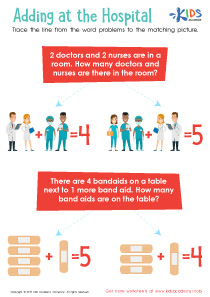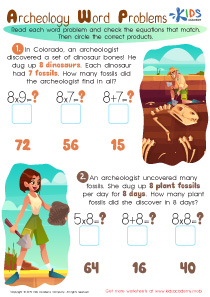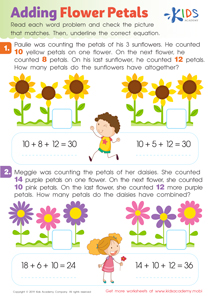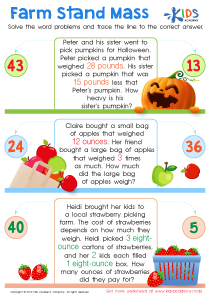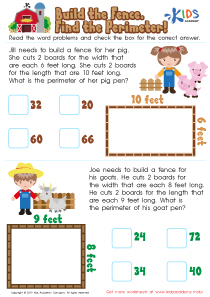Normal Money Word Problems Worksheets for 5-Year-Olds
1 filtered results
-
From - To
Introduce your little ones to the exciting world of basic math with our Normal Money Word Problems worksheets, perfectly tailored for five-year-olds. These engaging Learning online printables offer a fun and interactive way for children to understand the concept of money through simple, age-appropriate problems. Each worksheet is designed to build confidence and foundational skills in counting, recognizing coins, and basic arithmetic. Ideal for both classroom use and home learning, these printables ensure a solid start to financial literacy, encouraging young learners to apply math skills in everyday contexts. Start your child's journey to becoming a money-savvy individual today!
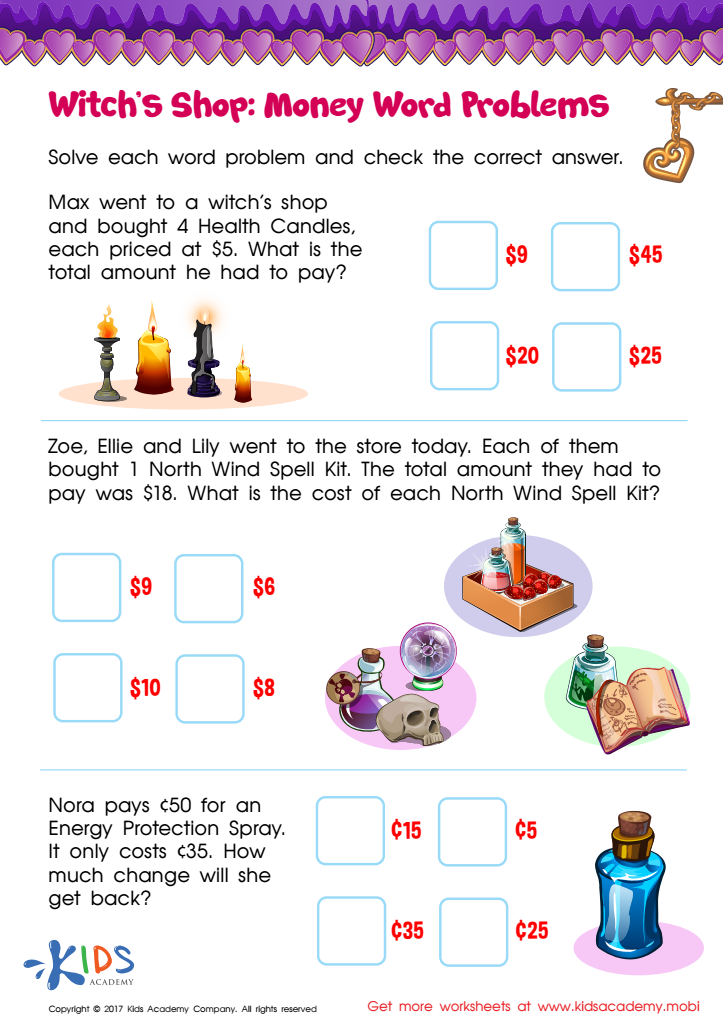

Money Word Problems Printable
Understanding the concept of money and its applications is essential for young learners, and one effective way to introduce this concept is through the use of learning interactive worksheets specifically tailored for children, such as those designed for five-year-olds. These worksheets, especially those focusing on money word problems, offer numerous benefits in the educational development of children. They not only enhance mathematical skills but also integrate practical life skills that will be utilized throughout their lives.
One of the primary advantages of using learning interactive worksheets on money word problems for five-year-olds is that they provide a real-world context that helps children understand the value and use of money. At the tender age of five, children are just beginning to notice transactions in stores, banks, or even within their own homes. By using worksheets that simulate these everyday interactions, children can start to make sense of the economic activities happening around them. This early exposure is crucial as it lays the foundation for more complex financial literacy skills later in life.
Furthermore, these worksheets are crafted in a way that makes learning engaging and fun. Learning interactive worksheets often include colorful illustrations, simple games, and scenarios that are relatable to a five-year-old. This can include problems like calculating the total cost of toys, figuring out the change after buying candy, or sharing coins among friends. Such interactive elements keep young learners engaged, enhancing their educational experience and encouraging active participation.
In addition to fostering financial literacy, these worksheets also support the development of basic math skills such as addition, subtraction, and counting. Money word problems require children to perform calculations to find answers, promoting numerical skills. For instance, a worksheet might ask, "If you have two $1 bills and buy a toy for $3, how much more money do you need?" This encourages children to perform simple addition and subtraction to solve the problem, thereby reinforcing their arithmetic skills in a practical context.
Moreover, money word problems help develop critical thinking and problem-solving skills. Children learn to read a scenario, analyze the information given, and come up with a solution. This process is vital as it trains them to think logically and make decisions based on the information at hand. These are essential skills that children will use not just in their schooling but in everyday life.
Lastly, learning interactive worksheets on money word problems are easily accessible and can be a versatile tool in both classroom and home learning environments. They are particularly useful for parents and educators to monitor and guide the learning process. By working through these worksheets with their children, adults can provide immediate feedback and additional support, ensuring that young learners understand the concepts being taught and can apply them appropriately. This one-on-one attention can significantly enhance the child's learning curve and confidence in handling money-related questions.
Additionally, the adaptability of these worksheets means they can be tailored to suit the individual learning pace and preferences of each child. Whether a child learns better through visual aids, practical examples, or repetitive exercises, these worksheets can be modified to meet these needs, making them an inclusive educational tool.
Interactive elements in the worksheets also cater to the varied learning styles of children. For instance, some worksheets may incorporate cutting out coin shapes or using digital platforms for calculations, appealing to kinesthetic and visual learners respectively. This variety ensures that learning remains a dynamic and interesting process for the children.
Furthermore, integrating teamwork into these activities can enhance social skills. Group activities encourage children to work together to solve money word problems, promoting skills such as communication, cooperation, and negotiation. These are critical interpersonal skills that help in the holistic development of a child.
In conclusion, learning interactive worksheets on money word problems are not only useful but essential for young children, especially those around the age of five. They provide a practical, engaging, and comprehensive approach to learning that integrates mathematical skills with real-life scenarios. These worksheets help in laying the groundwork for financial literacy, critical thinking, and problem-solving skills, all of which are indispensable in today’s world. By incorporating these tools into early education, we can ensure that children develop a strong foundation in managing money, preparing them for the financial decisions they will make in the future.
 Assign to the classroom
Assign to the classroom
